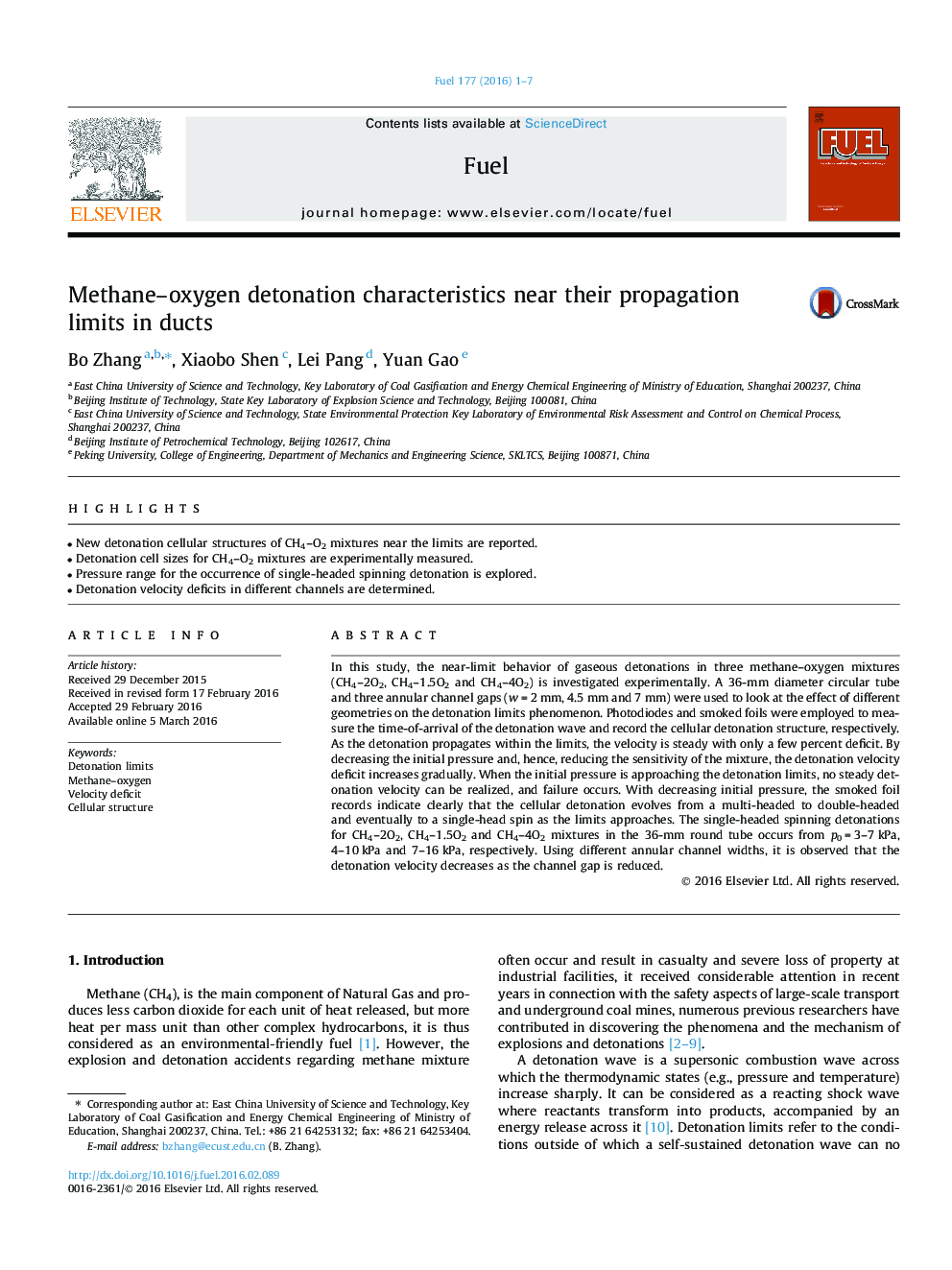| Article ID | Journal | Published Year | Pages | File Type |
|---|---|---|---|---|
| 205111 | Fuel | 2016 | 7 Pages |
•New detonation cellular structures of CH4–O2 mixtures near the limits are reported.•Detonation cell sizes for CH4–O2 mixtures are experimentally measured.•Pressure range for the occurrence of single-headed spinning detonation is explored.•Detonation velocity deficits in different channels are determined.
In this study, the near-limit behavior of gaseous detonations in three methane–oxygen mixtures (CH4–2O2, CH4–1.5O2 and CH4–4O2) is investigated experimentally. A 36-mm diameter circular tube and three annular channel gaps (w = 2 mm, 4.5 mm and 7 mm) were used to look at the effect of different geometries on the detonation limits phenomenon. Photodiodes and smoked foils were employed to measure the time-of-arrival of the detonation wave and record the cellular detonation structure, respectively. As the detonation propagates within the limits, the velocity is steady with only a few percent deficit. By decreasing the initial pressure and, hence, reducing the sensitivity of the mixture, the detonation velocity deficit increases gradually. When the initial pressure is approaching the detonation limits, no steady detonation velocity can be realized, and failure occurs. With decreasing initial pressure, the smoked foil records indicate clearly that the cellular detonation evolves from a multi-headed to double-headed and eventually to a single-head spin as the limits approaches. The single-headed spinning detonations for CH4–2O2, CH4–1.5O2 and CH4–4O2 mixtures in the 36-mm round tube occurs from p0 = 3–7 kPa, 4–10 kPa and 7–16 kPa, respectively. Using different annular channel widths, it is observed that the detonation velocity decreases as the channel gap is reduced.
